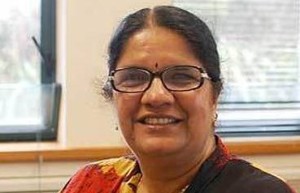Here's a plan to fix gender gap
Time for an action plan to close the gender pay gap, researcher says
Monday, August 22nd 2022, 8:28AM  1 Comment
1 Comment
by Jenni McManus

Businesses are being urged to transfer 20% of their profits for the next five years into a fund that can be used to address the gender pay gap.
Dr Pushpa Wood, the director of financial education and research at Massey University, also wants firms to do a financial resilience health check on all their employees, identify where gender pay gaps exist and develop strategies within the next three years to deal with them.
And a baseline needs to be established so when women go on parental leave, that baseline amount is automatically transferred to their KiwiSaver accounts.
Wood’s comments came during a recent panel discussion hosted by the Financial Services Council as part of its three-month campaign aimed at improving women’s financial wellbeing.
According to Stats New Zealand, the gender pay gap – the difference between men’s and women’s hourly rates – is 9.1%. It has moved little over the past three years: it was 9.6% in 2018, 9.3% in 2019 and 9.5% in 2020.
The gender pay gap is largely responsible for the 20% difference in the average KiwiSaver balances between men and women.
But balances are also impacted by the tendency of women to be more conservative in their choice of funds, says Retirement Commissioner Jane Wrightson.
According to research done by NZIER for Kiwi Wealth, choosing a conservative KiwiSaver fund rather than a growth fund could mean a difference of about $300,000 at retirement, she said. Key to solving the problem will be a concrete action plan to address women’s financial capability in the long-term.
Lack of action is also what is frustrating and “annoying the hell” out of Wood.
She points out that she arrived in New Zealand in 1980 and now – 42 years later – she is still hearing the same arguments and complaints about the pay gap. “So, whatever we’re doing, we ‘re not doing it right or we’re not asking the right people to do what we need [them] to do,” she said.
“It’s not a gender issue, it’s a societal issue, it’s attitudinal issue, it is a national issue, it is an international issue.”
If nothing is done and women’s KiwiSaver balances remain low, the government will need to step up even further when they reach retirement age, Wood said.
Several government ministries had, over the years, been charged with fixing the problem: the Department of Māori Affairs (set up in 1947), the Ministry for Women (1984) and the Ministry for Pacific Peoples (1992).
“We need to change our discourse. It is not a problem, it is not an issue, it is a challenge and we all need to overcome it.”
Wood says she comes from a culture where women are excellent savers.
“We have always been told that investing is a man’s domain. You make sure there is enough money to meet your needs and there is enough for your male partner to invest. We [women] haven’t actively taken part in that but I am very hopeful the younger generation will take charge of their own destiny.”
While there is “a certain lack of knowledge” among women in this country about investing, a more significant barrier is their lack of financial confidence.
Also missing from the conversation so far is an action plan for those who’re not in the paid workforce but contribute equally to society, Wood says.
| « [The Wrap] One good deal; One dud deal | Tough times ahead for NZ economy: Nikko economist » |
Special Offers
Comments from our readers
Sign In to add your comment
| Printable version | Email to a friend |




There are any number of factors that these raw averages need to be adjusted for before conclusions should be drawn e.g. industry, qualifications, experience for starters.
The actual gap might be higher than, the same as or lower than the 9.1% quoted.